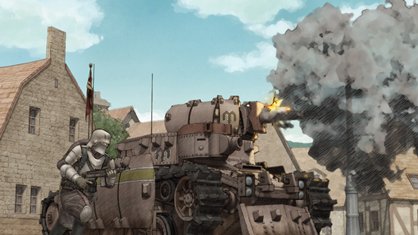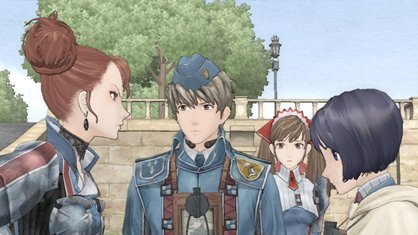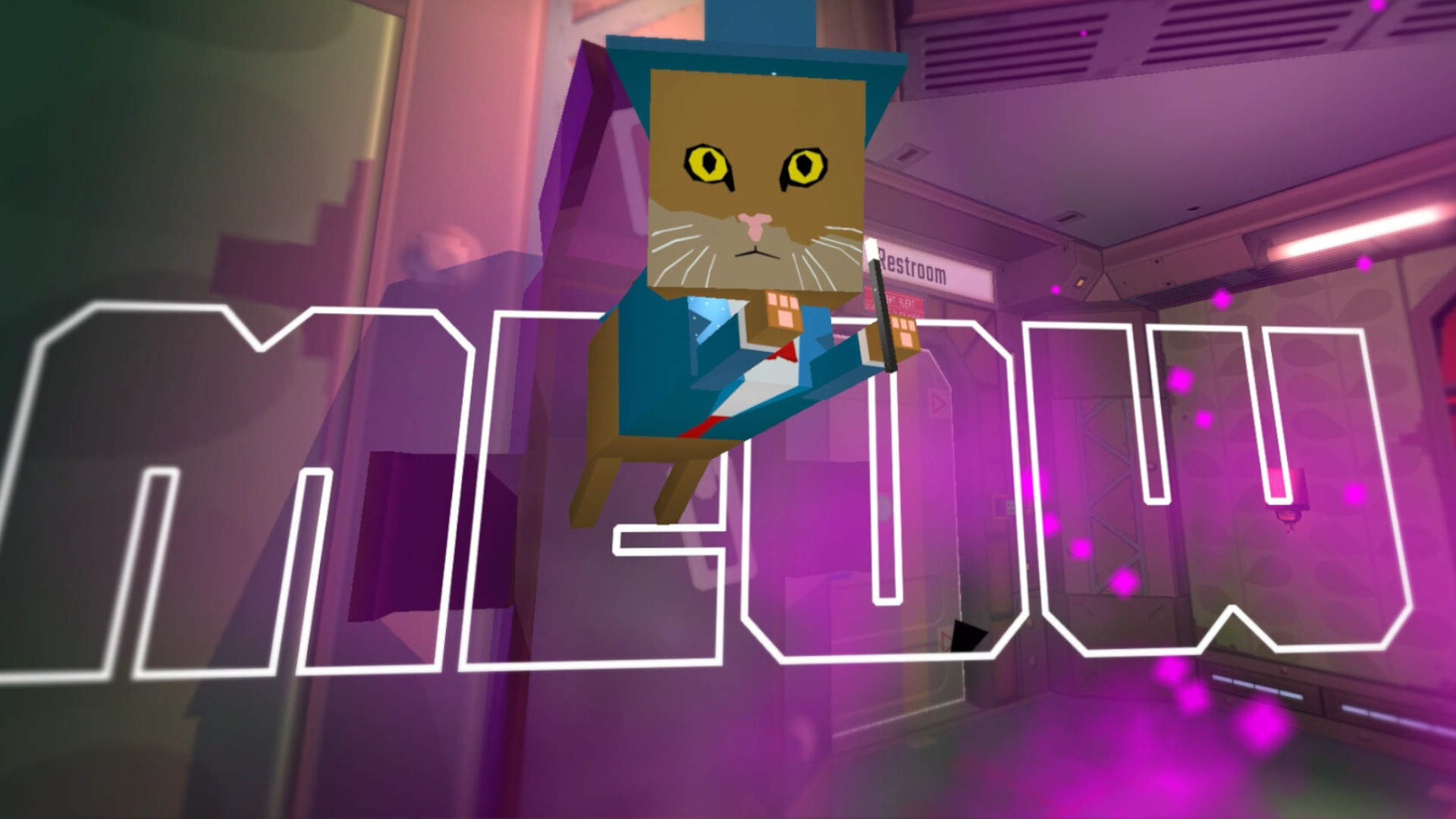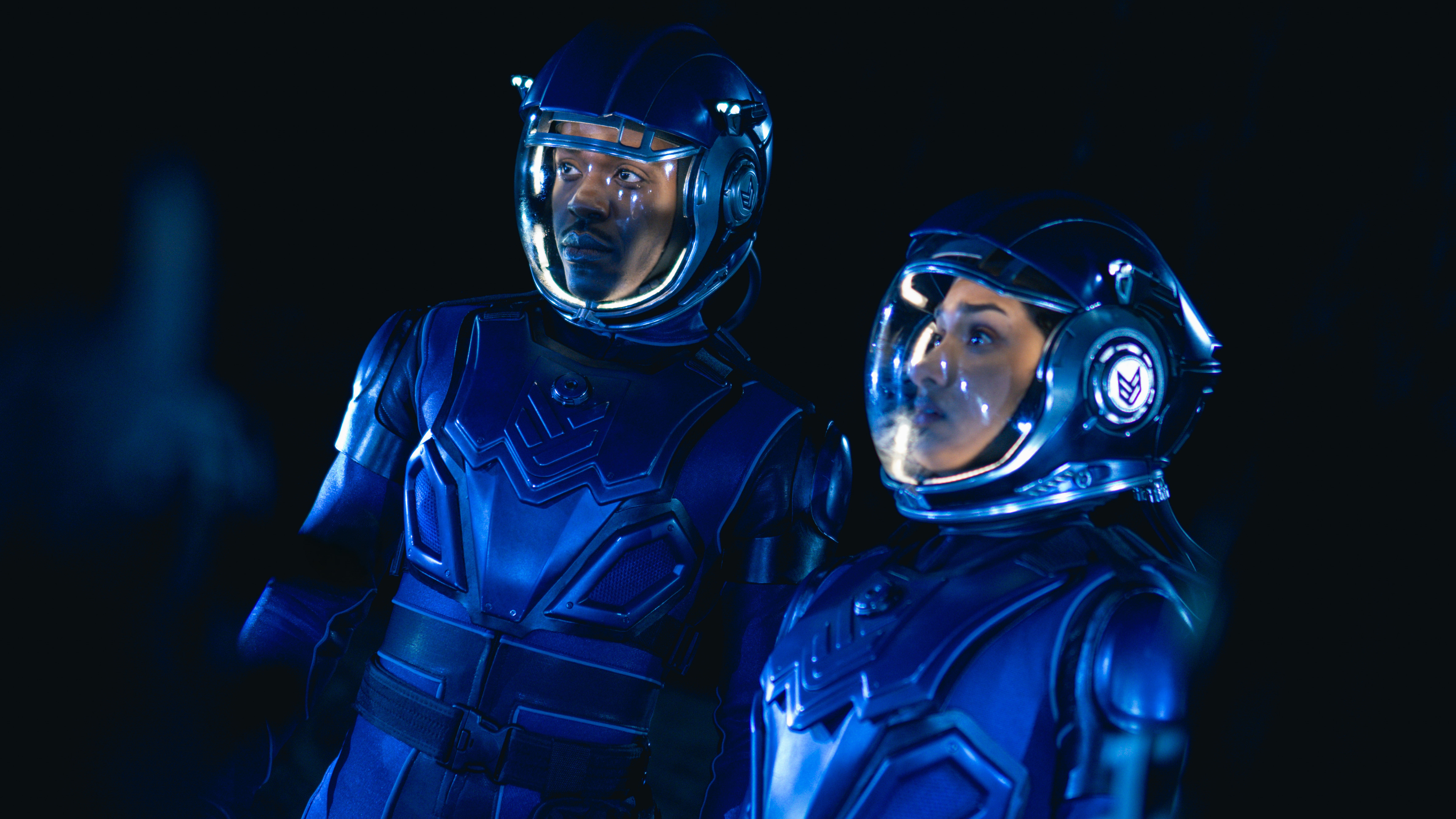Valkyria Chronicles - first look
Skies of Arcadia's love child... Is Studio Ghibli the father?
Command Points, View Points
Once you start the battle phase, an overhead area layout screen appears, showing you where the known enemies are and where your party will be placed (old hat for strategy buffs). You choose a party from the roster of available characters, some meat shields you can recruit and some main characters, with different classes that determine their equipment, range and other strategy stuff (more on that later). The party takes the field and then the actual battle begins. Your turn starts when you choose which of your characters will do something, spending a Command Point to activate their part of the turn.
Right away, Valkyria Chronicles looks and feels different from its distant handheld SRPG cousins in that the camera isn’t panned out in an overhead view, but right behind the active character in an action view. Valkyria calls this the BLiTZ battle system (Battle of Live Tactical Zones). The only other place we’ve seen anything like it in SRPGs isOperation Darkness (which is toenail clippings compared to Valkyria).

While a character is active, a movement gauge on the bottom of the screen will decrease with every step your character takes (no isometric grid here). You could stop moving and the gauge will stop as well, but if you’re in sight of the enemy, this seems like a bad idea. Once you’ve moved into position, you have the option to either use an item or use a weapon.
The direction you’re facing and the distance between you and your target factors in to whether or not you will hit them with an attack and for how much damage. So if you’ve moved into a position where your chances of hitting the nearest enemy are low, you’re better off using what you’ve got left of the gauge to get behind cover instead of standing out in the open (even hiding behind tall grass provides some cover from enemy fire). While you’re moving, you’re a target for the enemy and they will keep shooting at you unless you go into the item menu, enter the attack mode view, or end that character’s active phase and move on to another character.
Class Act
Character classes are divided into a sort of rock-paper-scissors system. Ground soldiers (snipers, assault infantry, etc.) are effective against anti-tank units, anti-tank units are harmful to tanks (duh), and tanks own unprotected ground soldiers like your granny owns Depends. Each class of character has special abilities (the engineer can resupply ammo to other fighters, the tank specialists can drive tanks, etc.) that you can expand with experience points. XP is awarded by class instead of to individuals when your party levels up, so you don’t have to worry about swapping characters around to keep them all leveled. Weapons and items can be given to specific characters, and we’ll have to find out what happens if your character dies- the weapon just might go with them.

Oh, yeah, did we mention that death is kind of permanent in Valkyria Chronicles? If a character goes down during a turn, you have three turns to get any one of your characters to that character’s body to tag it- at which point a medic will arrive and cart the fallen character off the field to fight again another day. If you don’t get to them, or the enemy gets to them first, they fade away and die. Like forever. And if it happens to a main character, it’s an automatic game over.
These little touches of reality are something that we like about Valkyria. Aside from the perma-death, if you shoot someone in the head, it does more damage than if you shoot them in the elbow. Or if you’re standing next to a structure that gets blown up, there’s a pretty good chance you’ll get blown up too. And if you run over your own guy with a tank, it kills them just as much as it’d kill an enemy if you ran them over. You might think reality is the death of role playing, but it makes the consequences of your actions feel more real, makes the combat seem more urgent, and therefore, everything is more awesome.
Sign up to the GamesRadar+ Newsletter
Weekly digests, tales from the communities you love, and more


